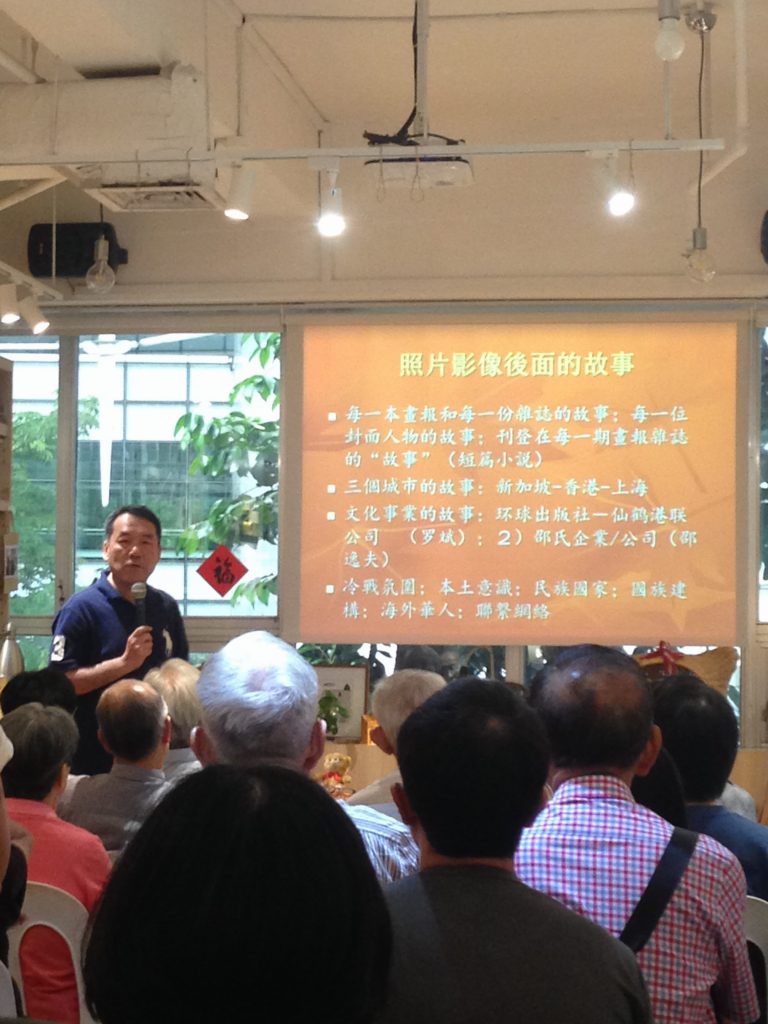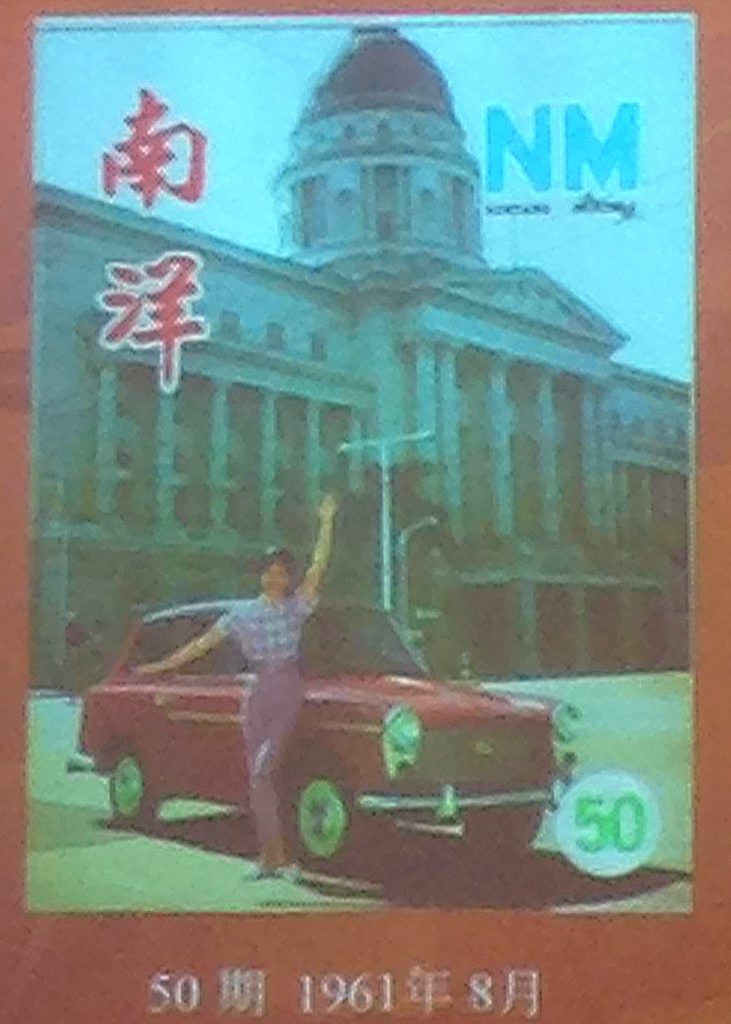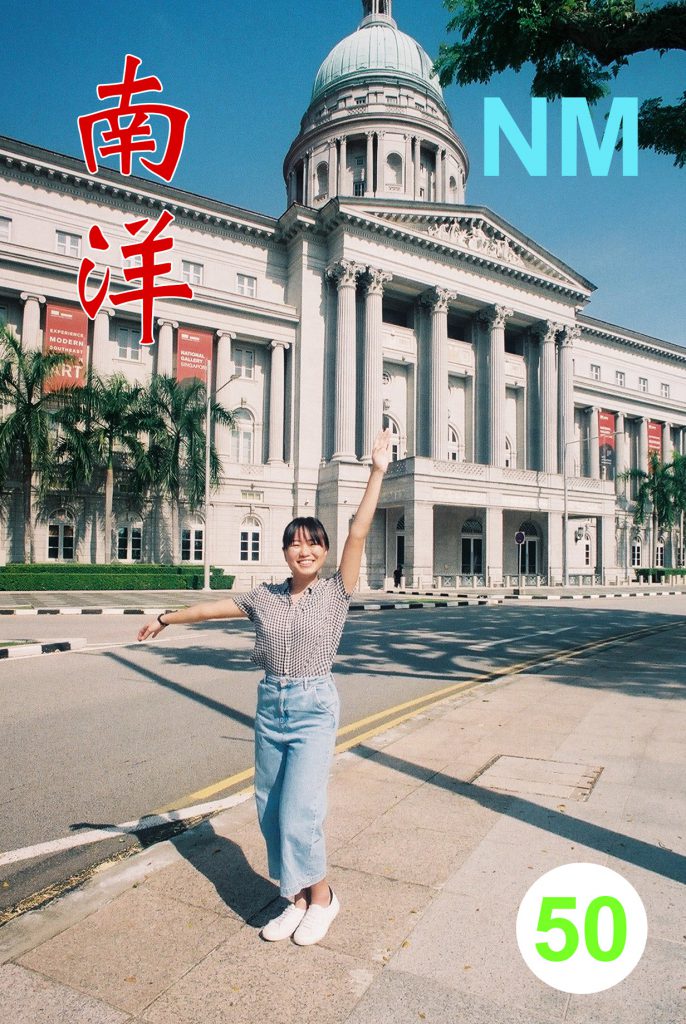Just last weekend I attended a talk on the common reading materials in Singapore after war, I was amazed and stoked to see how relevant it could be to the Assignment #1. Therefore, I have decided to extend the assignment out of curiosity and at the same time having a little bit of fun while I can afford the time to! The structure for this post will be a brief sharing of the talk, an initial analysis on a pictorial cover and ending off with a re-created version of it.
容世诚教授主讲 -“战后新加坡华文通俗读物:从一帧照片谈起”
“Common Chinese reading materials in Singapore after war: Stories begins from a photograph” by Assoc. Professor Yung Sai-Shing
27 JAN
Assoc. Professor Yung began his talk from a single photograph of a newsstand in the 1960s Singapore and that came as no surprise to me because it reflected well to the agenda of this session. Only when the speaker examined further into the unknown source of photograph, I was taken aback as what shown in his next presentation slide was a series of reading materials matching to those in that very photograph through his course of research. The talk was delivered in Mandarin with four fundamental factors: Stories of a pictorial, Stories of three cities: Singapore-Hong Kong-Shanghai, Stories of cultural undertakings and Stories of the political climate, through the three primary branches of Pictorial (畫報), Novel Magazine (小說雜誌) and Movie Magazine (電影雜誌).
Stories of a pictorial
幸福, 亞洲 and 南洋 were the three mainstream pictorials available to Singapore. Yung highlighted that even though幸福was operated in Hong Kong, its contents were related to South East Asia that featured stories and anecdotes of Singapore and Malaysia.
Stories of three cities: Singapore-Hong Kong-Shanghai
Yung flowed his talk to the point of the connection between the three cities, mentioning several notable writers and particularly the Shaw brothers.
Trivial: Run Run Shaw, founder of Shaw Brothers Studio, came to Singapore from Shanghai in 1927, left for Hong Kong in 1957. Aged 106, he passed away in Shanghai but had instructed his remains to be buried in Singapore.
Stories of cultural undertakings
Shaw Organisation has a long history in Singapore since its founding in 1924 by the Shaw brothers whom came from Shanghai. From the mid 30s to the 80s, the Shaws also operated two popular fairgrounds in Singapore – Great World Amusement Park (大世界) and the New World Amusement Park (新世界) which played a critical role towards the culture and entertainment scene in Singapore history.
The Shaws also spawned Shaw Brothers Studio in Hong Kong where many of the classical Hong Kong films were produced and distributed to the South East Asia.
Trivial: In 1934, Dato Roland St. John Braddell, who was born in Singapore and served as Municipal Commissioner (1914-1929) wrote that Charlie Chaplin was so fascinated by the Malay opera and the Chinese theatrical performances at the New World Amusement Park when he was there.
Stories of the political climate
Yung briefly ran through this point due to time constraint of how the political climate and ideology of a nation influenced the types of browsing/ reading materials being produced.
Analysis on the Pictorial Cover (畫報封面)
Throughout the talk, a pictorial cover was flashed but that image burnt into my mind instantly. I thought it would make a very interesting visual and contextual analysis in addition to Assignment #1. (I will try to get hold of a better photo and re-upload it)
We could clearly see that there stood a cheerful, vibrant lady standing in front of her possibly British-made Morris Mini waving to the photographer filled with joy and optimism in the setting of the elegant and sophisticated Old Supreme Court Building (current National Art Gallery of Singapore) featuring the Corinthian columns and classical design.
And so I asked, why this particular photograph for the cover? What was so special about it? The one crucial hint I have got was the year it was being published – August 1961. The period when Singapore gained full internal self-governance granted by the British authorities (1959) and in the midst of campaigning for merger with Malaya (1962 Merger Referendum) when people were uncertain towards the merger especially the local Chinese.
The photographer had portrayed the ideology of the nation through this simple yet impactful work if we were to look deep into the image – the subject matter and the background.
Subject matter – By placing a female with the car, it signified that the car belonged to the her and was competent in driving – the economical status and opportunity in the country was fair. Gender inequality was an undiscussed issue existed in Singapore way before 1960s and this possibly conveyed a massage to the public on the Singapore’s values of progress and equality regardless of gender as represented by two of the five stars in the national flag.
Background – The classical designed Old Supreme Court Building showcased the ideological, sociological and technological advancement of the nation as art historians studied that nations were building classical architecture modelling after the Greek/ Romans in the Age of Enlightenment (18th century) when various revolutions, notably the French revolution, took place to instil and showcase a sense of rebirth, identity and power of the “new” country.
The next hint I have got for drawing such a reading of the photograph was number of issue on the pictorial. History has shown us that the society tends to put importance into the numbers incremental of 50 and 100, 5, 10 and 25 to a lesser extent. This photograph I am discussing was published in the 50th issue, did it have an important message to say or was it a pure coincidence?
What we are looking at here is not just another mainstreamed pictorial cover with beautiful ladies in a great looking scene. This photograph brought confidence and prospect to the people, driving them to believe in the idea of merger with Malaya.
This photograph has represented the progression and hope of Singapore in 1961.
Conclusion
Each photograph has got stories behind them, some are obvious and grand while some are not so. To truly understand and experience the work of photographs we see, one must dig into the context of the work. To further support my writing, I have recreated the image with limited resources on a prototype basis. Getting approval from the respective authorities would take ages to have a car parked there in such an obstructing manner; simply visualise the car being there (or not) for the purpose of this little extended assignment of mine. Other than that, I have managed to get assistance from a beautiful and cheerful lady to strike a pose for me similar to the pictorial.
And now, how do you see these two images despite them having some similarities? I will be more than glad to find out what you think or feel and have a discussion together.
Special thanks to the cheerful lady for agreeing without a second thought to help me out with this extended assignment. She is none other than our dear peer Crystal Sim!




You must be logged in to post a comment.